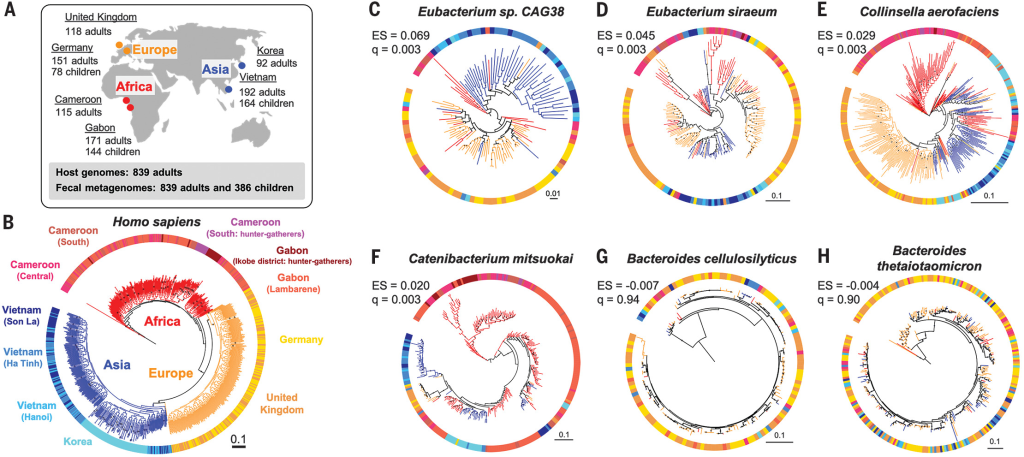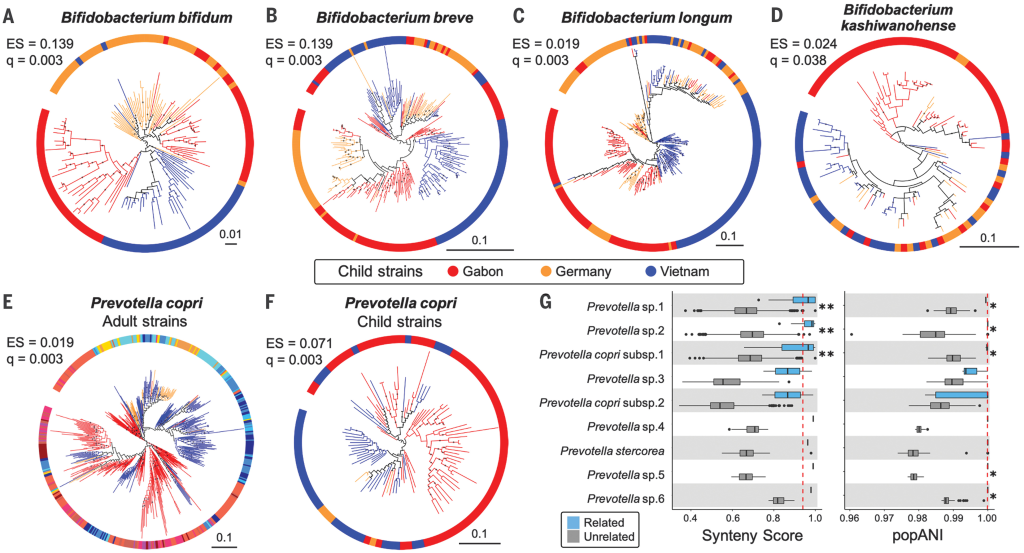The source of this blog comes from SCIENCE,VOLUME 377|ISSUE 6612|16 SEP 2022, , pp. 1328-1332 DOI: 10.1126/science.abm7759, Codiversification of gut microbiota with humans
An awareness of differences in gut microbial strains between populations has already led to the notion that probiotics for treating malnutrition should be locally sourced (38).
From Bifidobacterium infantis treatment promotes weight gain in Bangladeshi infants with severe acute malnutrition. Sci. Transl. Med.14, eabk1107 (2022).
I have held to the hypothesis that a person DNA and their microbiome evolved thru their ancestors and their ancestors’ diet together. This study demonstrated that the strains diverge .
Suzuki et al. noted that the global distribution of some human gut microbial strains mirrors historical human migration patterns out of Africa … However, within a species, some strains can show remarkable population specificity. The question is whether such specificity arises from a shared evolutionary history (codiversification) between humans and their microbes.
Evolutionary history of someone from the Hebrides Islands produces a high incidence of red hair. Evolutionary history of someone from the South Africa will be black haired, and low and high curl individuals [2017]. Similarly, their microbiome will be different and reflect the DNA inherited by their host.
This was nicely illustrated in a series of diagrams in the above article. In the middle of each circle, you will see how the different strains branched from each other:



I noticed the following in the article:
For mother-child pairs, strain sharing is often interpreted as vertical transmission, but acquisition of strains from a shared environment cannot be excluded (8). Indeed, our data also support strain sharing between community members: Within sampling locations in Gabon and Vietnam, we observed instances of the same strains in the microbiomes of mothers and unrelated children
Mother passing bacteria on to the children — breast feeding is the likely mechanism
We hypothesized that species that codiversified with their hosts are better adapted to the host environment than those that did not….together with the observed functional attributes, such as smaller genomes and oxygen and temperature sensitivity, codiversified species likely evolved host dependency.
This means issues such as diet and environment (hot, cold, humid, dry) impacts the evolution of the bacteria in the microbiome
Bottom Line
Probiotics should be sourced locally/from same genetic heritage. This is very technically feasible — just isolate the bacteria from stools of a suitable population, sequence it to insure no undesirable genetics, culture it and produce a local version.
Personally, I chuckle because the probiotic that I have responded best to was one that was one obtained from Germans in 1917, which in a match for my ancestry (Duchy of Slesvig, and southern islands of Denmark).
If you are of East Indian Descent (perhaps living in the US), you may wish to obtain probiotics from India and not your local health store. IMHO, you should contact the distributor of any probiotic that you use to obtain the provenance of the strain being used. Demand it!
To rephrase for some:
- If the probiotic kosher?
- If the probiotic halal?
Unfortunately, many probiotics being sold out there are not even from human sources, little more appropriate (regional) human sources for the consumers.

Recent Comments